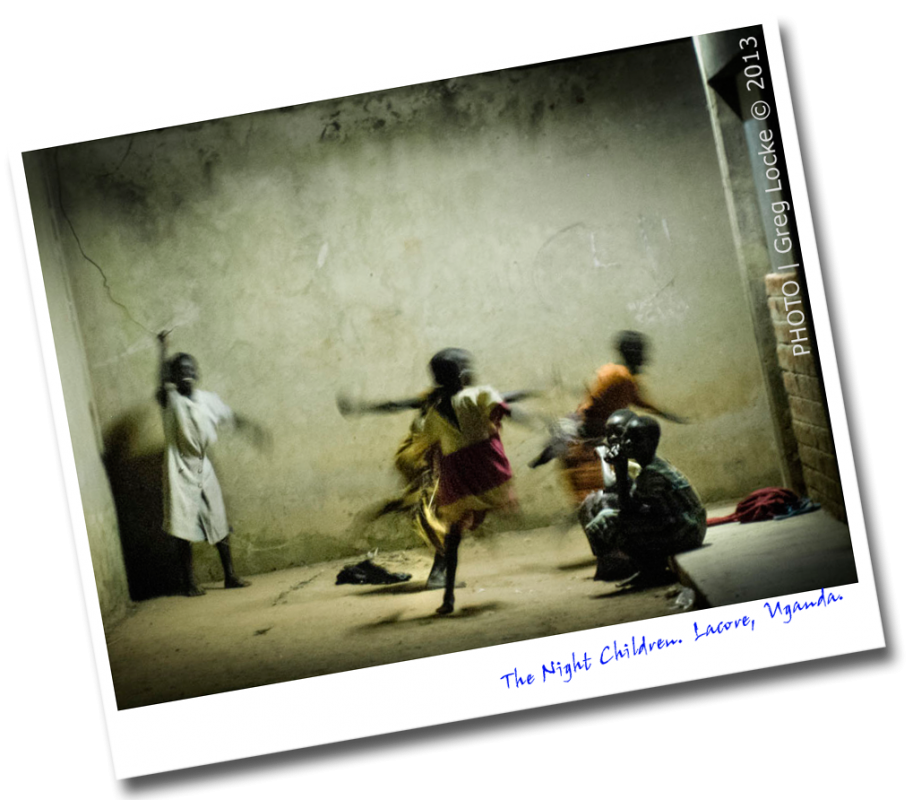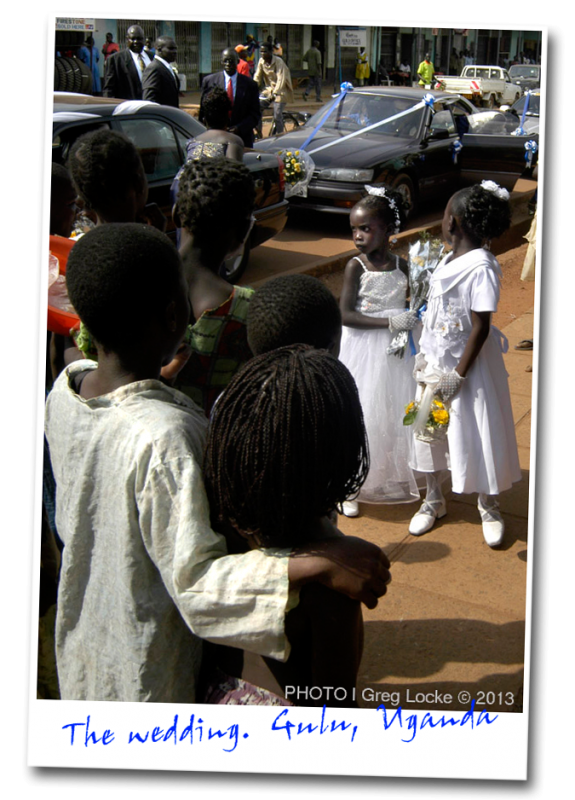By GREG LOCKE
These photos and rough notes were made in central and east Africa, where I spent nearly a decade covering news assignments and co-producing a book about Médecins Sans Frontières with Elliot Layton. My journeys, from 1996 to 2005, followed an arc through rural east and central Africa, from the Dadaab refugee camps on the Kenya – Somalia border, through South Sudan, Uganda, Rwanda to Lake Kivu in the Great Lakes region of the eastern Congo and Burundi. Many days were spent transiting in and out of my home base in Nairobi. These photos of conflict, humanitarian crisis and daily life are culled from my travel diaries. (…click on the thumbnails images to enlarge photos)
- Hot night in the desert/ refugee camp/ bandit ridden no-mans-land.
- Medicines sans Frontiers, CARE, WFP people and I gathered in open walled hut dressed up like a bar. I watch doctors fill out reports.
- Listening to people talk over today’s events in the camps.
- There are two soundtracks/dissonance: Insects buzzing, crackle of VHF walkie-talkies connecting aid workers/local staff. I hear voices in broken English calling out the death toll.
- Children here at risk from cholera and tuberculosis – but dying fast from cerebral malaria. Born with malaria. It’s killing them and often their mothers too.
- I’m getting sick. Has Lady Anopheles has found me too, now? So much for the Mefloquin!
LOKICHOGGIO, Kenya.
- Frontier town. Kenya–Sudan border. Feels like the end of the road.

- Locals and friends call it “Loki.”
- NGO City. Nothing natural about it. Built, literally, by UN & aid agencies as base of operations for relief/ aid work in southern Sudan.
- UN World Food program built the 8,000 foot runway. It’s littered with aluminum plane skeletons. Pilots who ran out of talent?
- What’s here: International Red Cross operating hospital. Logistics base for just about every international aid agency, construction company and charter air service working in S. Sudan/E Africa.
- Foreigners mix with local nomadic herdsmen, the Turkana and Samburu – who carry on their ancient pastoral tribal feuds here.
- Hijacking of trucks and shootouts = true frontier feel.
- Hot, dusty outpost but not entirely without “civilization:” entrepreneurship booming.
- Where there’s money, there’s money to be made: hence Loki’s bars, restaurants, housing, warehouses, cellular and satellite phone service, internet connections for couple thousand foreign aid workers, pilots and UN administrators who come
- Killer Kala Azar, AKA “Black Death” is endemic. Local. Not known in the west.
- Other than the dirt, heat, mini dust storms, low flying aircraft, malaria-carrying mosquitoes & sand flies spreading Black Fever it’s just like any tropical tourist destination: Great pizza, cold beer, soccer on the TV, an internet café. An oasis …of sorts.
- It’d be like a Caribbean resort village! (Except for the conversations about getting a 10-tonne Volvo truck with a drilling rig into the upper Nile area without roads. Except for the Russian pilots whose fuel cache was stolen by a Sudanese warlord.
- Africa at its strangest? Definitely.
NAIROBI, Kenya.
- I’m in the hands of The Lord. One of ironic, colourful (maybe prophetic?) names painted on Mutatus. Small minivans used by locals as bus service. Decrepit. Reckless. Pounding reggae music. 14 souls jammed inside. We careen through Nairobi streets.

- I see why most foreign agencies forbid employees from using them. Like death trap sardine cans. Baptized by lunatic pilots: “noms de guerre” — “Ride with The Lord,” “Bound For Glory,” “Mixed Nuts,” “Wheel of Fortune.” My personal favourite: “Jesus Wept”.
- Names amusing until I board Eagle Air from Entebbe to Gulu, Uganda: “Glory to the Lord” is painted on the nose.
- But it’s a nice new turboprop. Thankfully the naming habits the only thing this bird has in common with the mutatus.
- Whenever I leave for a while & come back Nairobi has changed — so much, every time. More paved roads, new car dealerships … condo bldgs. And AMAZING cell phone service! Canadian mobile provider back home could learn a lesson here.
- Business is booming.
- It’s World AIDS DAY … Tribal women in traditional dress and T-shirts are dancing by the hotel pool with business women in power suits, skirts and high heels …but they all know the dance.
GULU, Uganda.
- A dozen turkey-sized birds with large round bodies, scrawny necks and big heads with powerful beaks sit on a 3-meter brick wall. They squawk at everything that goes by. I am walking to a Canadian doctor’s house for supper and suddenly they come screaming out of the sky at me.
- The security guard opens the gate.
- I scream: “What the Hell are those things?”
- He: “Don’t know. Not local birds. Come from Zaire …very mean.”
- Just heard that a SUV owned by an American evangelical NGO ran over and killed a local Anglican priest. An apt metaphor about religion in Uganda it seems.
- Joined a wedding procession through town …they had a marching band.
LACORE, Uganda.
- Watching sun setting, watching a long line of children walking on dusty road.
- West of Gulu. Northern town, near Sudan border. It’s the front line of 18 year old war – Uganda’s UPDF army vs Lord’s Resistance Army rebels.
- These are kids looking for places to spend night where they may be safe from abductions, rape, robbery
 and torture.
and torture. - At home they’re prey for by Lord’s Resistance Army hunting parties. They go home in the mornings, spend days in their villages, going to school, roaming the dirt streets.
- Nights they come here. Some protection found on the grounds and inside hospitals/churches/government buildings/camps of international aid organizations.
- The organizations here for humanitarian assistance: there are 1.6 million internally displaced persons (IDPs = refugees in their own country) driven from their homes since this conflict escalated in 1996
- Tonight at St. Mary’s – long-established Italian missionary hospital. Children greet you with a unexpected “CAIO!”
- In Lacore you walk always near shadows. Dark figures in the dimly-lit compound, on the hospital grounds.
- My eyes adjust. The heaps of rags in unlit corners I thought were garbage are people sleeping. Thousands of them.
- They’re given away by a barely perceptible rustling/the fleeting glimpse of a moving hand/ flash of eyes/crying baby.
AWERE, Uganda.
- Morning. Sunrise filters through morning mists and cooking-fire smoke.
- I leave the camp compound in this village of mostly huts. People are starting their day.
- The village tailor and “Head Man” lifts an ancient sewing machine and puts it on the front verandah of a brick building. He’s open for business.
- Women go for water.
- Big Landcruisers tactically parked for a quick escape — reminders that this peaceful village is a fantasy, made up of people driven from their own villages by the war to the north.
- That war that can still find them if it wants to.
- Two young men in flip flops and irregular military fatigues carrying AK47s wander through town.
- Music from across the road …young people play homemade instruments and dance.
- TIA …this is Africa.
KIGALI, Rwanda.
- QUESTION: Why do smart, young, educated middle and upper class westerners do international aid work in conflict zones?
- ANSWER: Unemployment, under-employment, boredom, adventure and meaning.

- MSF worker: “ …if I was home I’d be working crappy shifts in a suburban hospital handing out pills and bed pans to people mostly suffering from self-inflicted health issues. Here? I get to run a field hospital at age 24.”
- Marilyn (MSF): “We like this work, we like this lifestyle. It’s a culture of its own.”
- Elliott Layton: “ …there is an ecstasy of moral clarity.”
- “The world can afford a humanitarian ideal.” – MSF logistician …Karl?
- The woman processing my press credentials has machete scars on her face and head. She is polite and efficient. I try to imagine how her physical scars compare to her psychological scars.
NYARAMA, Rwanda.
- Our driver is named Hassan. Today he drives us to a small church in a village called Nyarama , south of Kigali.
- During the genocide government militias took thousands of Tutsi minorities to this church. They fired machine guns and rocket-propelled grenades at the building after they got tired of killing them with pangas and machetes.
- The orgy of murder took six hours.
- That was two years ago — the bones are still in the building. Now villages are returning, removing them. It’s delicate work.
- On the alter sit the skulls of three priests.
- The smell….
- As we leave Hassan asks to stop at the cemetery where his family is buried.
- We watch him walk – quietly – through rows of simple wooden crosses.
- He looks up — nearby a group of Hutu refugees are on their way, returning from the Congo.
- Later, he tells us, he wondered if the killers of his family are among the Hutus.
- QUESTION: will these ethnic groups ever be able to live together again in Rwanda after this?
GISENYI, Rwanda.
- Over two days 800,000 men, women and children pass through this border town. They’re fleeing 3-way fighting in the refugee camps of eastern Congo.

- Roads, villages and fields in between are jammed with sick and dying.
- The dead are left in the ditchs where they fall.
- How to describe this? Biblical in its scope.
GOMA, Congo.
- A tent city refugee camp between Goma and Sake — it was attacked by one of the militias fighting for control over region.
- On this day it’s a smouldering plain. Refuse & mud everywhere.
- Some survivors didn’t make it out. They’re begging the aid agency advance teams for help.
SAKE, Congo.
- Local fisherman on the shore of Lake Kivu find a place to land their catch – a place not occupied by Rwandan refugees or militias.
- A MSF doctor offers up medicine to treat a child’s eye infection.
DADAAB, Kenya.
- I have malaria. Time to go.
- I enter a dark, makeshift bar on a dirt street covered in three inches of brown water. I shake hands with a pilot, give him $50.00, and hitch a ride back to Nairobi.
- On the plane I’m sick. He laughs.
- We swing out over the Indian Ocean. The night cloudless. We fly low along the coast in the full glow of the malaria moon.
View our photo gallery, click on the image to enlarge and get additional photos and caption information.
© 2013 Greg Locke
Portions of this article originally published in Touched By Fire, doctors without borders in a third world crisis by Dr Elliott Leyton and Greg Locke. Published by McClelland and Stewart Canada in 1998.(ISBN 0-7710-5305-3). Also, The UTNE Reader #94 July-August 1999.







